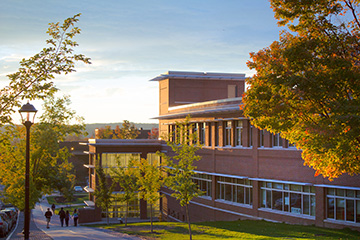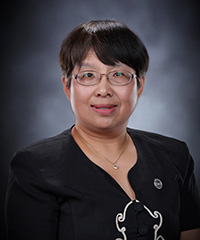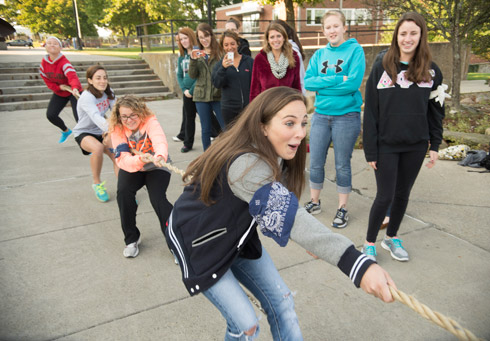
10/20/2020
SUNY Cortland professors are teaching during an unprecedented semester created by the COVID-19 pandemic. Through all of the challenges, faculty members have stayed dedicated to their craft in attempt to create meaningful experiences for their students. This profile continues a five-part series.
Lin Lin approaches her teaching with the foundational belief that social studies lessons at the elementary school level should be hands-on and interactive.
When she’s discussing ways to teach the American Revolution, she stages a tug of war game with her students outside of Memorial Library, where two sides act as the Continental Army and the British Army. It is one of many ways that Lin seeks to engage kinesthetic learners who acquire knowledge effectively through physical activities.
“I totally believe that elementary school social studies needs to be hands-on, hearts-on and minds-on,” said Lin, an associate professor of childhood/early childhood education who is teaching three classes that are fully online.
 |
| Associate Professor Lin Lin |
Limitations due to COVID-19 may have stymied Lin’s preferred teaching style, but she has persisted through effort and creativity. In mid-March, just before spring semester classes went remote and daily habits shifted dramatically, Lin attended the New York State Council for the Social Studies Conference in Albany. After she presented, she purposefully attended a workshop to learn a software for K-12 education known as Nearpod, which aids online learning with embedded interactive features such as videos, games, polls, drawing boards and collaborative activities.
Lin credits the Nearpod technology with helping her work through the pandemic. She takes photos and videos to weave into her online classes. In one lesson she learned from Rethinking Schools, she divided roughly 9,000 macaroni pieces in small sandwich bags to represent unequal wealth distribution across five groups in the U.S. — showing that the poorest one-fifth of Americans claims the equivalent of nine macaroni pieces while the wealthiest one-fifth holds 76 bags with 100 macaroni pieces in each. She models for her students the possibility to integrate math and social studies to teach about social justice.
“Students saw the visual representation,” said Lin, who collected student feedback last spring through a survey she created. “The lesson was still there.”
 |
| In this photo from 2014, teacher candidates participate in a tug-of-war activity that Associate Professor Lin Lin uses to teach about the American Revolution. |
She also has used Flipgrid, a video discussion tool, to facilitate important conversations. In a lesson about cultural identity in the social studies classroom, she asks students to share two children’s books with their college classmates; one should be a “mirror” book that reflects aspects of the individual student’s identity while the other should be a “window” book that introduces a different cultural group and opens a wider world for teacher candidates and their future students to learn about diverse people in the world.
When all of her class sections are added together, students gain a collection of more than 100 possible titles to add to their future classroom libraries.
“They learn from each other,” Lin said. “The goal is to bring children’s books with diverse characters to represent the real America.”
Lin admits that the switch from standing in front of a classroom to a computer screen has been difficult, but she continues to rely on her own enthusiasm to keep students engaged.
“Students notice the passion,” she said. “If you love what you teach, it’s more likely that students will too.”
--
Do you know a SUNY Cortland professor or student who has done something interesting in their classes during the pandemic? Email communications.office@cortland.edu